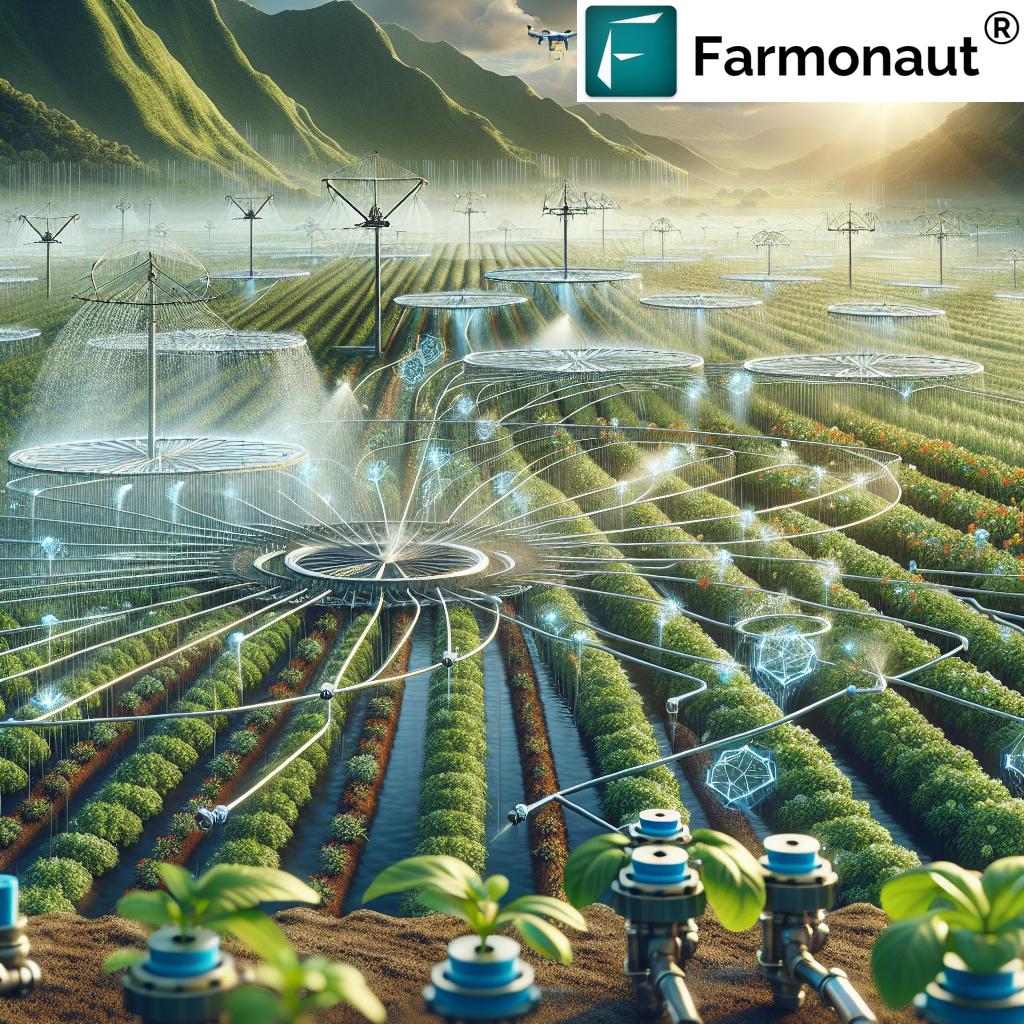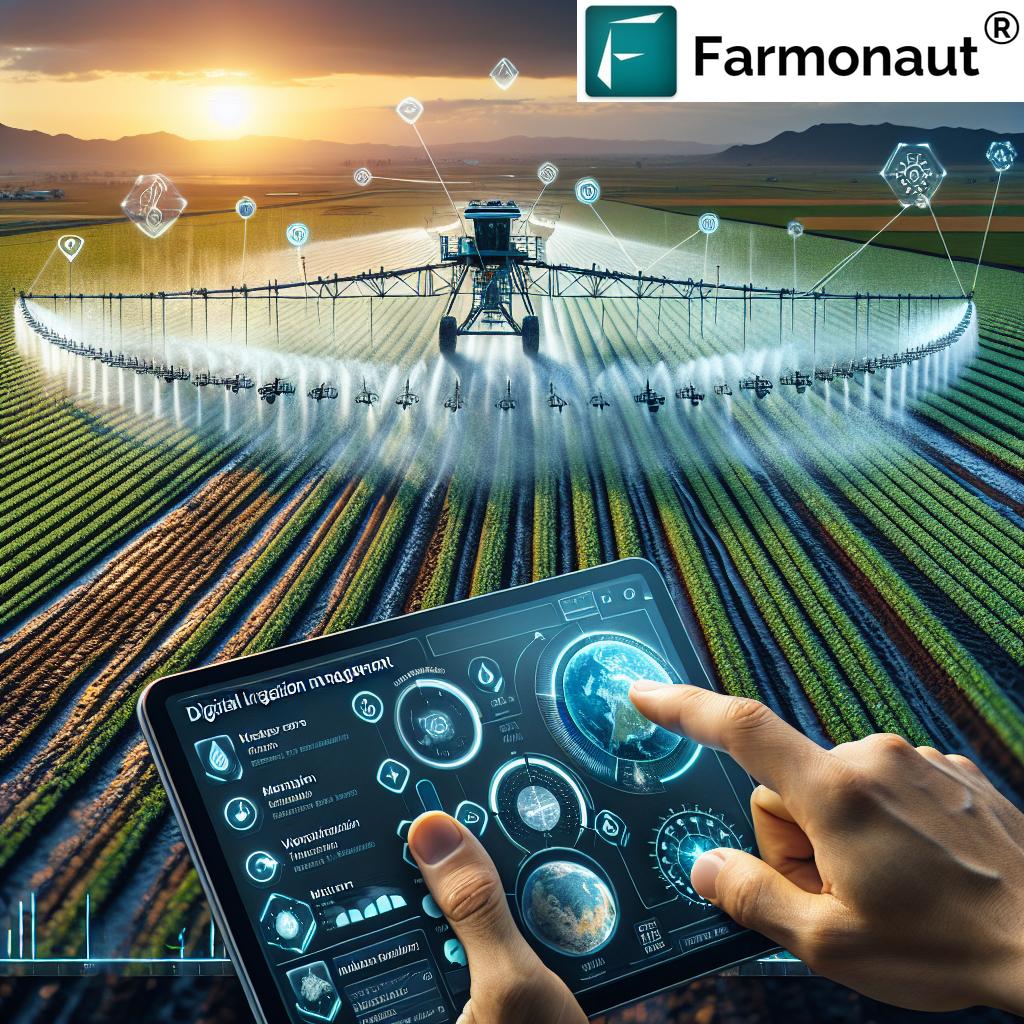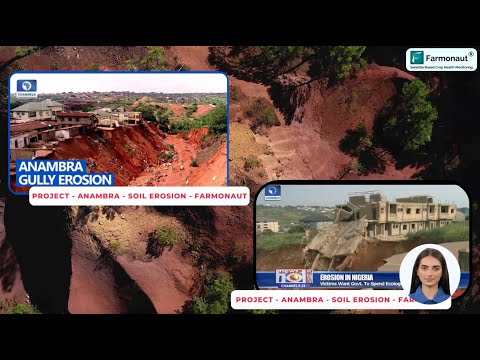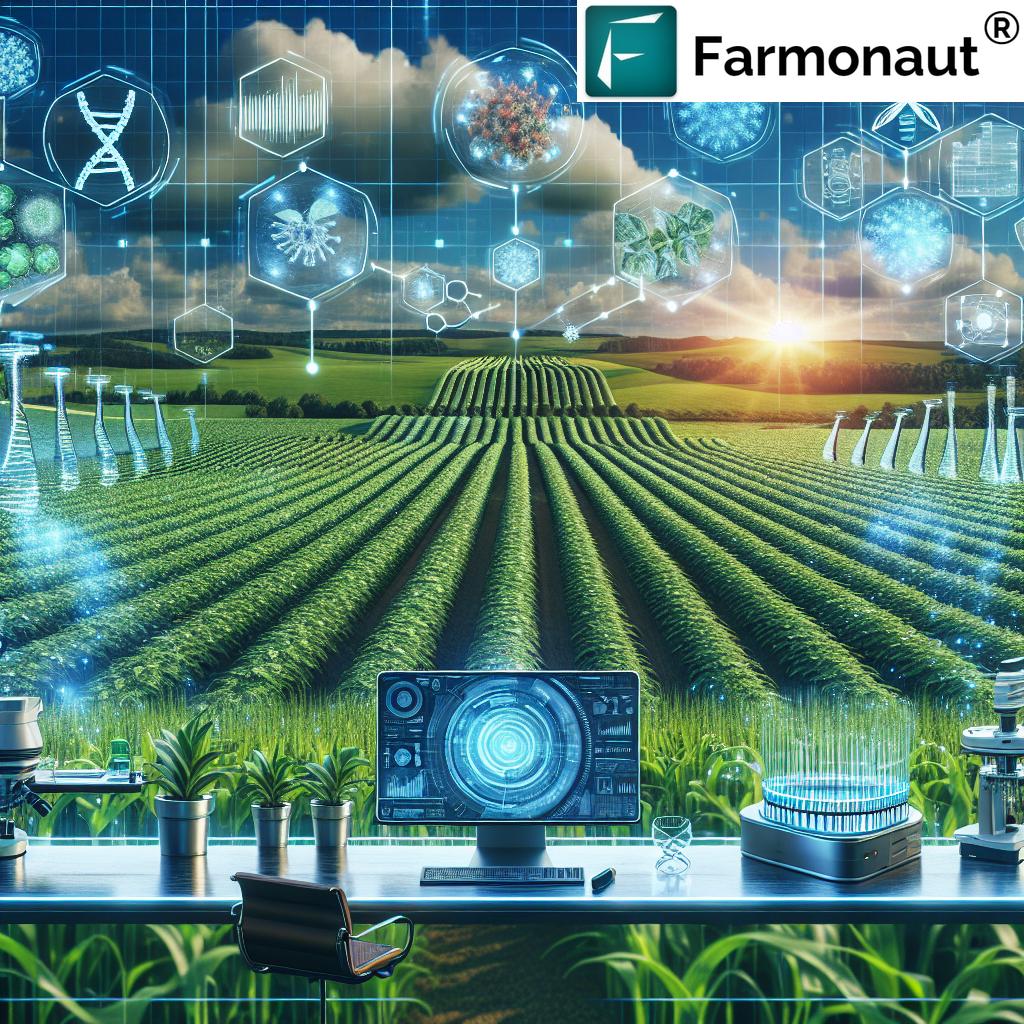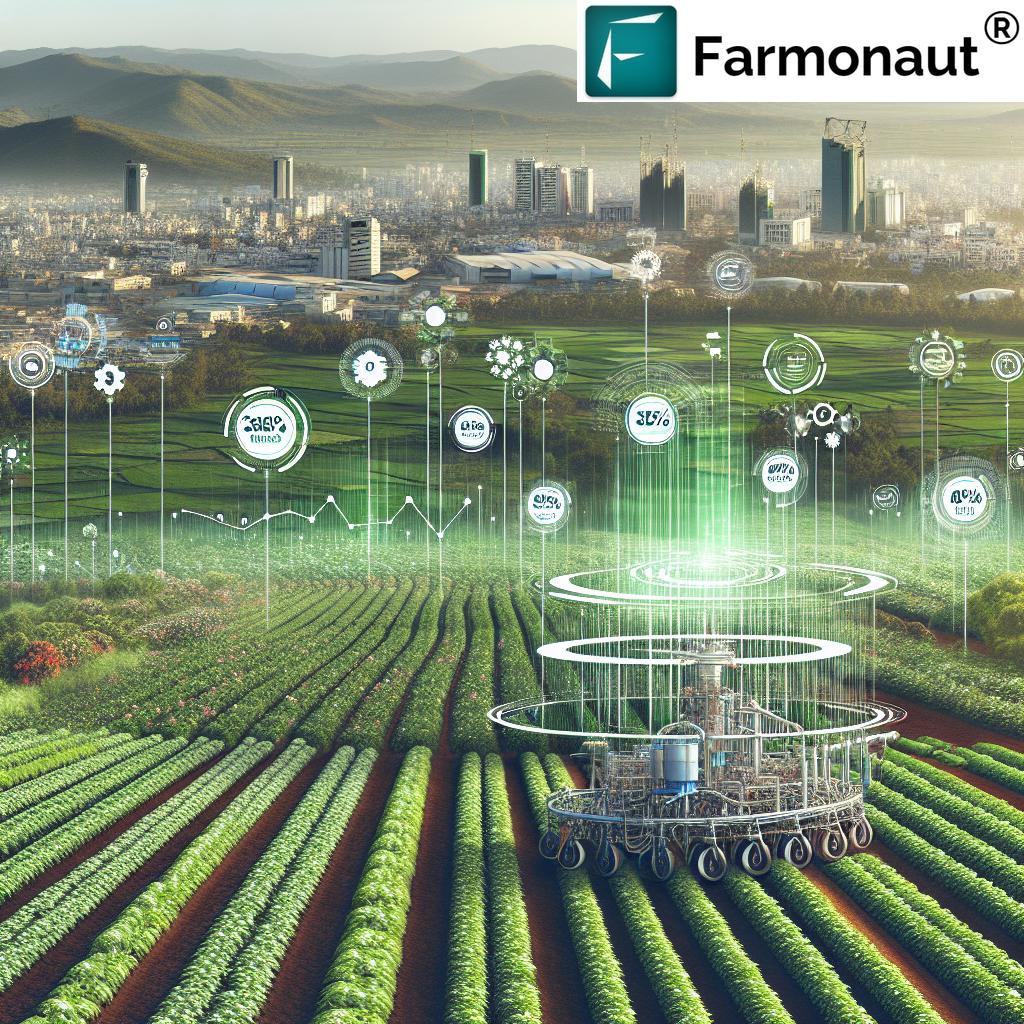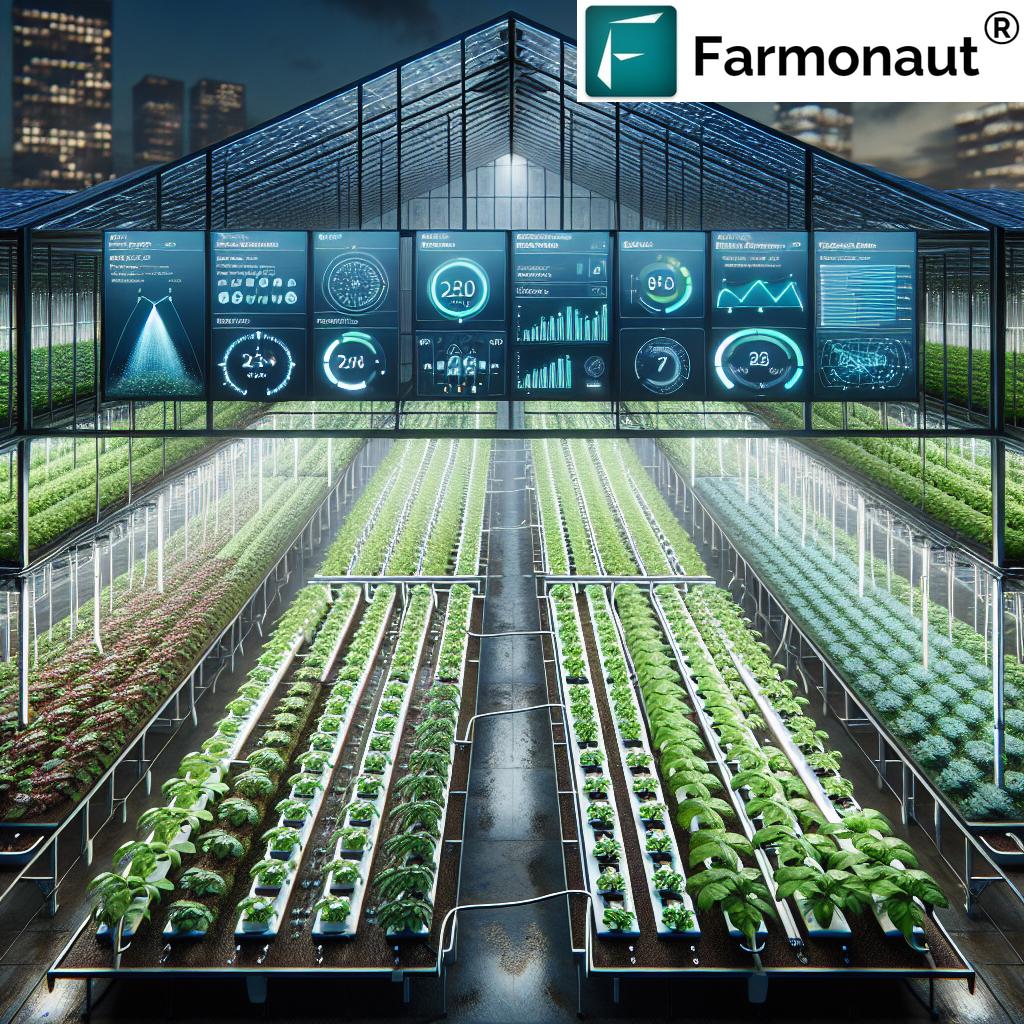“Precision irrigation adoption in Asia-Pacific is projected to grow by over 15% annually through 2028, revolutionizing water management.”
Table of Contents
- Summary: Precision Irrigation Transforming Asia-Pacific
- Understanding Precision Irrigation
- Market Overview and Asia-Pacific Growth
- Key Technologies in Precision Irrigation
- Regional Insights: Asia-Pacific Leading the Way
- 7 Shocking Trends in Asia-Pacific’s Precision Irrigation Market
- Trend Comparison Table
- Key Benefits of Sustainable Irrigation Practices
- How Farmonaut Solutions Support Sustainable Irrigation
- Adoption Challenges in Precision Irrigation
- Future Trends & Innovations
- Farmonaut Solutions & Platforms
- FAQ: Precision Irrigation in Asia-Pacific
- Conclusion: The Next Chapter for Asia-Pacific Agriculture
Precision Irrigation Market: 7 Shocking Trends in Asia-Pacific
Precision Irrigation: Transforming Agriculture and Forestry
As the Asia-Pacific region contends with increasing water scarcity, food demand, and environmental challenges, precision irrigation is revolutionizing our approach to both agriculture and forestry. By optimizing water usage, enhancing crop yields, and promoting sustainable farming innovation, this advanced irrigation approach leverages real-time data, digital management systems, and integrated technologies for unparalleled efficiency and resilience. In this blog, we deeply explore the seven most shocking trends currently driving the Asia-Pacific precision irrigation market, and unveil how solutions like Farmonaut’s satellite-enabled smart agriculture systems support the next green revolution.
“Smart agriculture systems in Asia-Pacific can reduce water usage by up to 30% while maintaining or increasing crop yields.”
Understanding Precision Irrigation: The Core of Smart Agriculture Systems
At its core, precision irrigation combines advanced technologies such as sensors, satellite imagery, GPS, and data analytics to monitor soil moisture, weather conditions, and crop health—all critical for efficient water use and optimal crop growth. By leveraging these systems, farmers and foresters deliver water precisely when and where it’s needed, reducing waste and ensuring optimal plant health. This approach addresses key challenges in resource management, from water scarcity to inefficient irrigation practices across the Asia-Pacific landscape.
- Drip irrigation systems deliver water directly to the root zone (achieving up to 95% efficiency), ensuring uniform moisture distribution.
- Variable rate irrigation enables custom water application based on soil variability within a field.
- Advanced digital irrigation management platforms like Farmonaut integrate satellite data and AI-driven insights into traditional irrigation and farming practices, providing actionable information in real time.
Market Overview: Unprecedented Growth in Asia-Pacific’s Precision Irrigation
The global precision irrigation market is projected to grow at a compound annual growth rate (CAGR) of 14.84%, reaching $4.47 billion in 2027, up from $2.24 billion in 2022 (BIS Research). This growth is primarily driven by Asia-Pacific’s rapidly increasing adoption of smart agriculture systems, the integration of advanced irrigation technologies, and the rising demand for food security and agricultural sustainability.
- Asia-Pacific commands roughly 30% of global market share.
- Government initiatives, water conservation targets, and resource management needs are accelerating adoption.
- Notable advances in India, China, Australia, Japan, Southeast Asia, and South Korea, each seeking efficient, resilient agricultural practices.
The synergy between digital infrastructure, AI, IoT, and data analytics fosters a culture of innovation, making the Asia-Pacific precision irrigation market the one to watch.
Key Technologies in Precision Irrigation: Smart Systems Driving Sustainable Growth
The precision irrigation market thrives on the integration of several key technologies that enable precise water application, resource conservation, and real-time crop health monitoring. The most influential systems dominating the Asia-Pacific region are:
-
Drip Irrigation Systems:
Deliver water directly to a plant’s root zone, dramatically reducing water waste and offering up to 95% water use efficiency.
Use Case: Ideal for row crops, horticulture, and regions where water is scarce or expensive.
Benefits: Improved soil moisture management and minimized weed growth. -
Sprinkler Irrigation Systems:
Distribute water over crops in patterns similar to rainfall, adaptable to various terrains and crop types.
Use Case: Preferred for cereals, pastures, and large open-field areas.
Benefits: Consistent crop growth and enhanced plant health. -
Boom Irrigation Systems:
Utilize rotating arms to deliver water uniformly, essential for large-scale farming operations.
Use Case: Common in plantations, orchards, and open vegetable fields. -
Variable Rate Irrigation (VRI):
Adjusts irrigation application rates across different parts of a field based on in-field variability, optimizing water conservation in agriculture.
Benefits: Maximizes water use efficiency and crop yield optimization by responding to real-time field data and satellite imagery (such as offered by Farmonaut’s app and API: Farmonaut Satellite-Weather API). -
Sensor-Based Irrigation Systems:
Measure soil moisture, weather conditions, and crop health in real time, enabling automated, data-driven digital irrigation management. -
Remote Monitoring Platforms:
Allow us to track on-field irrigation needs, water usage, and crop growth from any location, integrating updates via mobile/web platforms for rapid intervention.
The collaborative power of these systems delivers measurable gains in sustainability, cost reduction, and farm productivity throughout Asia-Pacific.
Regional Insights: Asia-Pacific’s Emerging Dominance in Precision Irrigation Market
While North America currently accounts for 35% of the global precision irrigation equipment market, Asia-Pacific—driven by countries such as India, China, Japan, Australia, Vietnam, and Thailand—is emerging as the fastest-growing region. This trend is propelled by
- Rapid urbanization and declining agricultural land,
- Increasing water scarcity and regulatory reforms,
- Government incentives for smart resource management,
- Accelerated integration of digital irrigation management platforms (such as Farmonaut’s subscription-based tools for all farm scales),
- Greater public-private investments supporting sustainable irrigation practices.
The region’s strong agricultural tradition combined with modern technology adoption is setting the stage for a transformation in food systems and rural economies.
Precision Irrigation Market: 7 Shocking Trends in Asia-Pacific
As we carefully monitor market dynamics, the following seven trends have emerged as pivotal in the Asia-Pacific precision irrigation landscape. These trends are not only transforming how we manage water, crops, and soil, but are propelling the region towards sustainable, high-output agriculture and forestry.
1. Drip Irrigation Adoption Reaches Record Highs
- Description: What started as a water-saving technique in arid Israel is now sweeping through Indian, Chinese, and Southeast Asian farms as governments and industry bodies invest heavily in drip irrigation systems.
- Impact: Some Asia-Pacific regions report up to 50% expansion in irrigated acreage using drip over traditional flood systems, with tomato, sugarcane, and cotton crops leading the charge.
- Benefits: Achieving 95% water use efficiency, higher crop yields, and improved resource allocation.
- Supporting Technologies: Real-time moisture monitoring, satellite-enabled VRI.
2. Sensor Integration Accelerates Digital Transformation
- Description: Precision agriculture is rapidly deploying sensors for continuous tracking of soil moisture, weather, and crop health, providing real-time data for automated decisions.
- Impact: Farms using IoT-connected sensors report 15%–30% reduction in water usage while boosting crop yield optimization.
- Benefits: Efficient digital irrigation, predictive analytics, improved field productivity.
- Supporting Technologies: Cloud data platforms, AI-based real-time irrigation triggers.
- Product Example: Platforms like Farmonaut supply multi-spectral satellite images and AI-driven crop advisories (learn more about precision farming solutions).
3. Explosion of AI-Based Solutions for Irrigation Management
- Description: Artificial intelligence enables smarter, automated irrigation every season. AI examines satellite imagery, historical weather, and crop patterns to predict water needs.
- Impact: South and Southeast Asian growers using AI systems report up to 25% increase in irrigation efficiency and 15% decrease in input costs.
- Benefits: Enhanced accuracy and adaptability for variable rate irrigation, minimizing both under- and over-irrigation.
- Supporting Technologies: Farmonaut’s AI-based crop advisory, machine learning weather forecasting.
4. Remote and Automated Monitoring Becoming the Norm
- Description: Remote monitoring, enabled through satellite platforms and IoT, gives farm managers unprecedented visibility into irrigation events, soil moisture, and crop growth from any device.
- Impact: Large rice, cotton, and sugar plantations in Asia-Pacific are now managed through digital dashboards, allowing for rapid alerts and interventions.
- Benefits: Lowered labor costs, improved data-driven decisions, and optimal water distribution.
- Supporting Technologies: Web interface and mobile app integration, notably through Farmonaut’s Agro-Admin App for large-scale farm management.
5. Water Savings and Conservation Take Center Stage
- Description: Water conservation in agriculture is now a primary focus, with precision irrigation cutting waste by only applying what’s needed, where it’s needed.
- Impact: Many Asia-Pacific operations achieve water savings of 30%–50% through optimized irrigation schedules and variable rate irrigation systems.
- Benefits: Enhanced sustainability, lower input costs, increased farm profitability.
- Supporting Technologies: Farmonaut’s Carbon Footprinting Tools help track environmental impact of irrigation practices, supporting farm compliance and carbon reduction goals.
6. Regulatory and Government-Driven Incentives Drive Market Uptake
- Description: National and state governments across Asia-Pacific increasingly offer subsidies, mandates, and tax incentives for sustainable irrigation practices and technology integration.
- Impact: Programs in India, China, and Australia have accelerated smallholder and large-scale adoption of drip, sprinkler, and digital management systems.
- Benefits: Democratization of advanced irrigation technologies—making them accessible to farms of all sizes.
- Supporting Technologies: Blockchain-based traceability facilitates transparent outcomes in government programs (see Farmonaut’s product traceability offering).
7. Rapid Adoption by SMEs & Smallholders
- Description: Historically, advanced irrigation systems were costly and complex, limiting adoption to large plantations. With affordable SaaS models (as delivered by Farmonaut), small and medium farms now engage directly in precision agriculture.
- Impact: Over 40% of new irrigation deployments in Asia-Pacific are among SMEs and smallholder operators, unlocking new growth and rural prosperity.
- Benefits: Lower initial investment; increased farm productivity with real-time insights and support.
- Supporting Technologies: Scalable web/mobile platforms and flexible pricing tiers.
Trend Comparison Table: Asia-Pacific Precision Irrigation Market
| Trend | Description | Estimated Market Impact (USD bn) | Projected Growth Rate (% CAGR) | Leading Countries | Key Technologies Involved |
|---|---|---|---|---|---|
| Drip Irrigation Adoption | Surging use of drip for high-value and water-stressed crops | $1.2+ | ~15% | India, China, Israel, Thailand | Drip Systems, Soil Moisture Sensors, Satellite Guidance |
| Sensor Integration | Expansion of digital field monitoring for data-driven irrigation | $0.7 | 18% | Japan, South Korea, Australia | IoT, Soil & Weather Sensors, Remote Dashboards |
| AI-Based Solutions | Automated, predictive irrigation driven by artificial intelligence | $0.9 | 21% | Australia, India, China | AI, Machine Learning, Satellite Imagery, VRI |
| Remote Monitoring | Hands-off, observable irrigation via apps & APIs | $0.75 | 17% | China, Australia, India | Mobile/Web Apps, Satellite Platforms, IoT Sensors |
| Water Savings | Focus on conservation with measurable reductions in usage | $0.6 | 16% | India, Vietnam, Philippines | Drip, Sprinkler, VRI, Carbon Tracking |
| Government Initiatives | Incentives for digital transformation & efficient irrigation | $1.1 | 14% | India, Australia, China | Blockchain, Subsidy Tracking, Digital Management |
| SME Adoption Rates | Rapid take-up of affordable solutions among smallholders | $0.8 | 20% | India, Indonesia, Bangladesh, Thailand | Mobile Apps, Satellite Insights, Subscription Models |
Key Benefits of Sustainable Irrigation Practices in Asia-Pacific
- Water Conservation: Precision water application means less runoff, less waste, and increased long-term viability of aquifers.
- Enhanced Crop Yields: Data-driven crop management achieves more uniform growth and higher quality yields.
- Cost Efficiency: Reducing energy and water costs translates directly to farm profitability.
- Environmental Sustainability: Precise management of inputs prevents soil erosion, nutrient runoff, and excess carbon footprint.
- Resilience to Climate Volatility: Real-time monitoring and adaptive control mean we can swiftly respond to changing weather conditions.
- Scalability for All Farm Sizes: From large agribusinesses to smallholders, affordable SaaS models (such as Farmonaut’s) help integrate advanced irrigation technologies without prohibitive upfront investments.
Learn how carbon footprint tracking supports sustainability goals: Farmonaut Carbon Footprint Tools →
How Farmonaut Solutions Support Sustainable Irrigation, Crop Management, and Carbon Reduction
Farmonaut is redefining the Asia-Pacific precision irrigation landscape by making satellite-enabled, AI-driven, and blockchain-supported farm management accessible across individual farms, agribusinesses, and government programs. Here’s what sets us apart:
-
Satellite-Based Crop Health Monitoring:
- Uses multi-spectral satellite imagery to monitor crop and soil health—enabling timely irrigation and fertilizer applications.
- Farmers get instant alerts on moisture stress and vegetation status directly on phone or desktop.
- API integration also available for agri-developers: Farmonaut Satellite-Weather API (view developer docs).
-
AI-Driven Farm Management:
- Jeevn AI system analyzes satellite data, soil metrics, weather patterns to create custom irrigation schedules.
- Users receive personalized advisory for reducing water waste and optimizing resource usage.
-
Blockchain-Based Traceability:
- Blockchain ensures transparency and trust, tracing every step from field to market—critical for export, organic, and government-subsidized crops.
- Read more on Farmonaut’s product-traceability systems.
-
Fleet & Resource Management:
- Optimizes farm logistics, machinery use, and resource deployment for large and medium farms.
- Check out Farmonaut Fleet Management for maximizing operational efficiency.
-
Carbon Footprinting:
- Monitors the environmental footprint of farm operations, including the impact of irrigation practices on carbon emissions.
- Enables compliance with regulatory targets while promoting sustainable practices.
-
Affordable, Scalable Subscription Model:
- Flexible plans for individual farmers, cooperatives, agribusinesses, and agencies.
- Accessible via Android, iOS, and web/browser app:
Farmonaut Platform →
Want to manage large-scale plantations or forests? Try our Crop Plantation & Forest Advisory tools—designed to give insights for both agriculture and forestry resource management.
Adoption Challenges: Overcoming Barriers in Precision Irrigation
Despite clear benefits, widespread adoption of precision irrigation in Asia-Pacific faces several notable challenges:
- Initial Investment: High upfront costs pose a hurdle for small and medium farms, though affordable SaaS and government incentives help reduce this barrier (more about cost solutions).
- Technical Expertise: Running digital irrigation management systems requires specialized knowledge, necessitating ongoing training and support.
- Data Management: Integration of large volumes of data (from sensors, weather, and satellite imagery) can overwhelm users without user-friendly dashboards and API compatibility.
- Regulatory Frameworks: Water rights, subsidy schemes, and irrigation standards may lag behind technology innovation, requiring policy updates (for example, blockchain-based traceability now helps authorities monitor and enforce standards effectively).
- Connectivity & Infrastructure: Lower internet penetration and technology access in rural locations can limit integration, though mobile-first apps and low-bandwidth solutions help address this gap.
Future Trends: Innovations Shaping Asia-Pacific’s Irrigation Markets
Asia-Pacific is on the verge of further transformation thanks to these emerging trends in precision irrigation:
-
AI and Machine Learning:
Enhanced irrigation scheduling, automated water distribution, and predictive crop modeling (as seen in Farmonaut’s Jeevn AI advisory system) for better resource allocation and yield improvement. -
IoT Integration:
Connected networks of field sensors and remote-control systems allow for real-time monitoring of soil, water, and weather parameters. -
Blockchain in Water Management:
Blockchain provides secure, transparent water rights and usage recording; helps create efficient water markets, particularly relevant in water-scarce regions. Learn more about blockchain traceability. -
Robotics & Automation:
Autonomous irrigation devices and robotic crop monitors are reducing labor demands and boosting response speeds. -
Integration with Financial Services:
Satellite-based crop verification supports easier access to crop loans and insurance—visit Farmonaut Crop Loan & Insurance Solutions.
As these technologies gain traction, our industry’s focus will sharpen on inclusivity, resilience, and transparency—making Asia-Pacific a global role model for sustainable irrigation management.
Farmonaut Solutions: Your Bridge to Smart Irrigation
- Start monitoring your farm with Farmonaut’s web, Android, or iOS platform for real-time crop insights, resource tracking, and irrigation optimization—no hardware purchase necessary.
- Integrate satellite and weather data directly into your management systems using the public Farmonaut API.
- Learn about custom solutions for large scale farm management via Agro-Admin App.
- Need traceability or supply chain transparency? Visit Product Traceability Solutions for brands, food processors, and exporters.
Farmonaut Subscriptions: Affordable Access to Smart Irrigation and Crop Management
FAQ: Precision Irrigation in Asia-Pacific
1. What is precision irrigation and why is it important in Asia-Pacific agriculture?
Precision irrigation is the use of advanced digital systems—such as sensors, satellite imagery, and data analytics—to guide irrigation water application exactly where and when crops need it. In Asia-Pacific, with its mix of water scarcity and high food demand, precision irrigation maximizes yields, minimizes environmental impact, and supports sustainable growth for farmers of all scales.
2. How do smart agriculture systems contribute to water conservation?
Smart agriculture systems continuously monitor soil, crop, and weather conditions in real time. They automatically adjust irrigation rates based on these insights, eliminating guesswork and reducing unnecessary water use by up to 30% while maintaining or increasing crop yields.
3. What are the main costs involved with adopting precision irrigation?
Costs can include sensor hardware (if used), software subscriptions, and initial setup. However, technology platforms like Farmonaut eliminate expensive on-field hardware requirements by leveraging satellite data, making precision farming affordable—even for smaller farms.
4. Can small and medium farms in Asia-Pacific access precision irrigation technologies?
Absolutely. With cloud platforms, subscription models, and mobile-first solutions like Farmonaut, even smallholders gain access to advanced crop monitoring and irrigation scheduling without heavy capital investment.
5. How can precision irrigation support sustainability and climate goals?
By reducing water waste, optimizing input use, and tracking carbon footprint, precision irrigation empowers farmers and foresters to comply with environmental regulations, participate in green initiatives, and build resilient rural economies.
Conclusion: The Next Chapter for Asia-Pacific Agriculture
Precision irrigation is more than a technology—it’s a paradigm shift. In the rapidly evolving Asia-Pacific landscape, these seven trends demonstrate how digital, smart irrigation and sustainable resource management can secure our food future, safeguard our water supplies, and foster healthier, more prosperous rural communities.
As we integrate satellite imagery, AI, IoT, and blockchain into precision farming solutions, every grower—regardless of field size, location, or resource—can join the agricultural revolution.
Explore Farmonaut for practical tools, and let’s lead the way to smart, data-driven, sustainable irrigation management across the Asia-Pacific.


